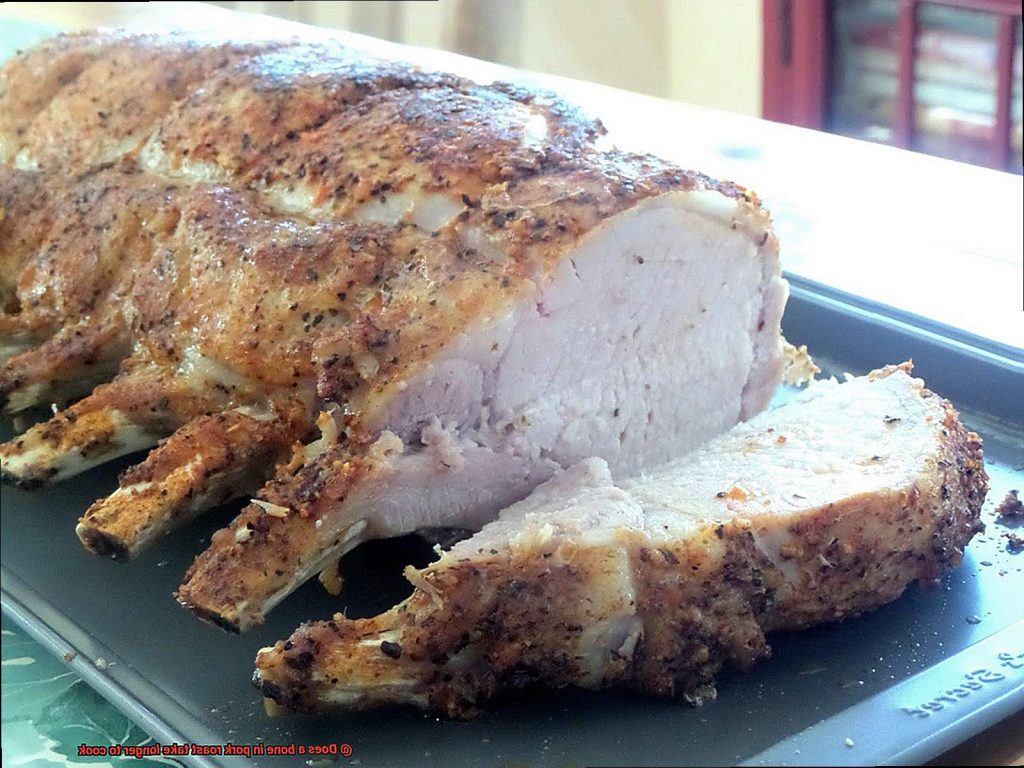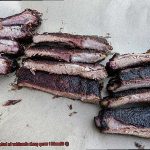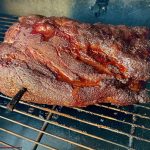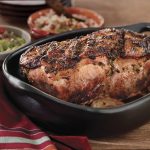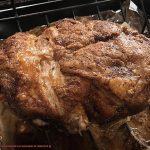Are you gearing up to prepare a succulent pork roast for your next family gathering or special occasion? Then, you might have heard the age-old adage that a bone-in pork roast takes longer to cook than a boneless one. But is this merely an old wives’ tale?
The truth is, yes, it does take longer to cook a bone-in pork roast than its counterpart. However, there’s more to it than just folklore. In fact, cooking with the bone can have a significant impact on the final taste and texture of the meat.
In this blog post, we’ll delve into the science behind why a bone-in pork roast requires more time to cook and what steps you can take to ensure that your dish turns out perfectly. We’ll examine various factors that influence cooking time such as weight, size, temperature, and cooking method.
Regardless of whether you’re an experienced chef or just starting in the kitchen, comprehending how to cook a bone-in pork roast is crucial if you want to create an unforgettable meal. So let’s get started and discover all there is to know about this savory cut of meat.
Contents
Does a Bone-In Pork Roast Take Longer to Cook?
The answer is yes, a bone-in pork roast does take longer to cook than a boneless one. This is because the bone acts as an insulator, slowing down the cooking process. But don’t worry, with a little patience and some expert tips, you can achieve a succulent and flavorful pork roast that your family and friends will love.
The cooking time for a bone-in pork roast depends on several factors, such as its size, oven temperature, and desired level of doneness. As a general rule of thumb, expect it to take 20-30 minutes longer to cook than a boneless roast. But remember, these are just estimates and cooking times can vary depending on personal preferences and other factors.
To ensure your bone-in pork roast is cooked perfectly, use a meat thermometer. It’s the best way to monitor the internal temperature of the roast and make sure it’s safe to eat. According to the USDA, pork should be cooked to an internal temperature of 145°F (63°C), followed by a three-minute rest time before carving.
In addition to using a meat thermometer, there’s another trick you can try for an amazing result. Sear the meat on all sides before roasting it in the oven. This method helps to seal in the juices and create a delicious crust on the outside of the roast.
Factors That Affect Cooking Time
Cooking a pork roast can be intimidating, but understanding the factors that affect cooking time is key to achieving a succulent and flavorful result every time. As an expert in cooking, I’m here to help you navigate these factors with ease.
Let’s start by addressing the common question of whether a bone-in pork roast takes longer to cook than a boneless one. The answer is yes. Bones are poor conductors of heat, which can slow down the cooking process, leading to unevenly cooked meat. Additionally, bones can act as insulators, further slowing down the transfer of heat from the outside of the meat to the inside.
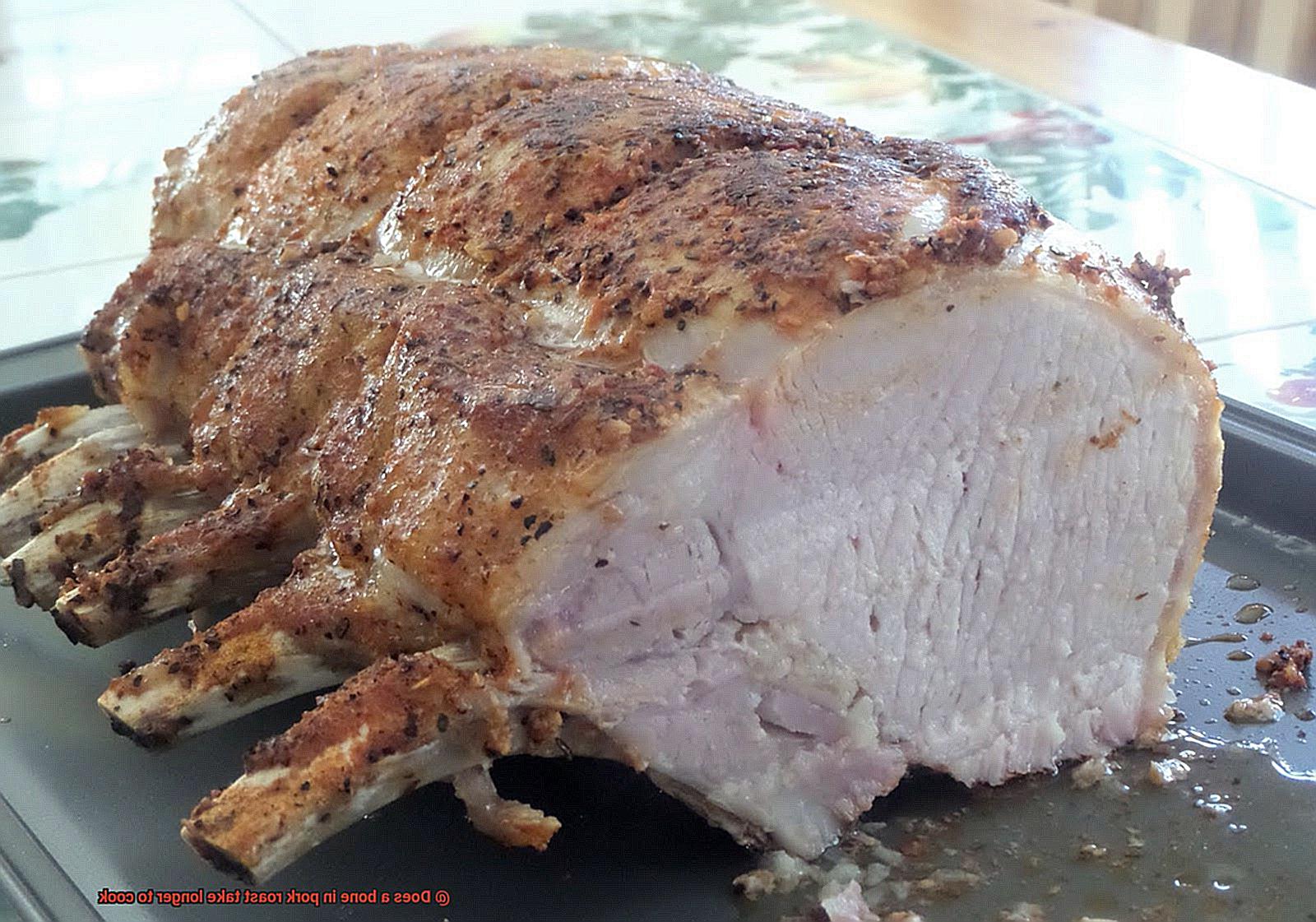
Size and thickness also play a crucial role in determining cooking time. A larger or thicker pork roast will naturally take longer to cook than a smaller or thinner one, regardless of whether it has a bone or not. Thus, it’s essential to adjust the cooking time based on the size and thickness of your pork roast for an even cook.
The cooking method used is another factor that affects cooking time. Roasting, grilling, or slow-cooking all have different cooking times and require different temperatures. Consequently, it’s essential to pay attention to the oven temperature and adjust accordingly for your chosen cooking method.
Marination or seasoning can also affect cooking time. If your pork roast has been marinated or seasoned, it may cook faster or slower than an unseasoned one. Hence, it’s important to keep an eye on your pork roast and adjust the cooking time accordingly.
It’s crucial to use a meat thermometer to ensure that the pork roast has reached a safe internal temperature of 145°F before consuming. This way, you can guarantee that your pork roast is both safe and cooked to perfection.
How Much Longer Does a Bone-In Pork Roast Take to Cook?
First, cooking times can vary depending on several factors such as size, thickness, seasoning, and cooking method. But when it comes to bone-in pork roasts, the presence of bones can affect the cooking process.
Bones act as a barrier to heat transfer, which means that the meat closest to the bone may take longer to cook than the rest of the roast. So, keep in mind that a bone-in pork roast generally takes longer to cook than a boneless one.
But just how much longer will it take? Well, that depends on the size and thickness of your cut of meat. As a general guideline, expect a bone-in pork roast to take anywhere from 5 to 15 minutes longer per pound than a boneless roast.
Now, to make sure your pork roast is cooked to perfection and safe for consumption, use a meat thermometer. Insert it into the thickest part of the meat (not touching bone) and check for an internal temperature of at least 145°F. Once your roast has reached this temperature, let it rest for at least 3 minutes before carving to allow the juices to distribute evenly throughout the meat.
Using a Meat Thermometer
Cooking a bone-in pork roast can be a daunting task, but worry not. Using a meat thermometer is one of the most accurate ways to ensure that your roast is cooked to perfection. The bone in the roast can affect the cooking time and temperature, making it all the more important to use a meat thermometer to check the internal temperature of the meat.
The process is simple – insert the thermometer into the thickest part of the meat, avoiding contact with the bone. This will give you an accurate reading of the temperature of the meat itself. It’s important to note that a bone-in pork roast takes longer to cook than a boneless roast as the bone acts as an insulator, slowing down the cooking process. So, keep an eye on your oven temperature and cooking time.
To determine when your bone-in pork roast is fully cooked, use your trusty meat thermometer to check the internal temperature of the meat. The United States Department of Agriculture (USDA) recommends cooking pork to an internal temperature of 145°F (63°C) with a three-minute rest time. Following this will ensure that the meat is safe to eat without overcooking it and making it dry.
Using a meat thermometer is an essential tool for cooking a bone-in pork roast. By checking the internal temperature of the meat and ensuring it reaches 145°F (63°C), you can guarantee that your roast is properly cooked and safe to eat. With attention to factors such as cooking time and oven temperature, you can achieve a perfectly cooked pork roast with juicy and tender meat that will make your taste buds dance.
Tips for Perfectly Cooked Pork Roast
Cooking the perfect pork roast is an art form that requires some tips and tricks to get it just right. But did you know that whether your pork roast has a bone in it or not can also affect how it cooks? In this blog post, we’ll explore the importance of taking into account whether your pork roast has a bone in it, and provide you with five sub-sections of helpful tips to achieve the perfect pork roast every time.
Choosing the Right Cut of Pork
The first step to cooking the perfect pork roast is choosing the right cut of meat. Different cuts of pork vary in terms of their fat content, tenderness, and flavor. For example, a pork loin roast is leaner and more tender than a pork shoulder roast, but may require more seasoning to make up for its lack of fat. Consider your recipe and choose a cut of meat that will work well for your needs.
Preparing Your Pork Roast
Once you have your pork roast selected, it’s important to prepare it properly before cooking. If you’re using a bone-in roast, score the fat on top to help it crisp up during cooking. Marinating or rubbing your pork with flavorful seasonings can also add depth and complexity to the final dish. Remember, pork can be quite bland on its own, so don’t skimp on the seasoning.
Cooking Your Pork Roast
Whether you prefer to cook your pork roast low and slow in the oven or grill it over high heat for a crispy exterior, monitoring the internal temperature of your pork is crucial. Use a meat thermometer to ensure that your pork reaches a safe temperature of 145°F for medium-rare, 160°F for medium, and 170°F for well done. A bone-in roast may take slightly longer to cook than a boneless one, but it can also help distribute heat more evenly throughout the meat.
Resting Your Pork Roast
Allowing your pork roast to rest for a few minutes after cooking is essential to ensuring a juicy and flavorful final product. This allows the juices to redistribute throughout the meat, resulting in a more succulent and tender roast. Don’t rush the resting process – give your pork roast at least 10 minutes to rest before slicing into it.
Avoiding Overcooking
Overcooking your pork roast can result in a dry and tough roast that no one wants to eat. Once your pork reaches the desired internal temperature, remove it from the oven or grill and let it rest for a few minutes before slicing. Remember that the residual heat will continue to cook the meat slightly, so don’t be afraid to take your pork out of the oven or off the grill a few degrees before it reaches its final temperature.
i2UGdEzHVvs” >
Conclusion
To sum it up, the notion that a bone-in pork roast requires more time to cook than a boneless one is not just an old wives’ tale. The presence of bones in the roast can impact cooking time and temperature, so it’s crucial to use a meat thermometer to check the internal temperature of the meat. Bones act as insulators, slowing down the cooking process and affecting heat transfer, which means that the meat closest to the bone may take longer to cook than other parts of the roast.
Several factors such as size, thickness, seasoning, and cooking method come into play when determining cooking time. It’s vital to adjust cooking time based on these factors for an even cook. Choosing the right cut of pork, preparing it properly before cooking, and allowing it to rest after cooking are also key factors in achieving a succulent and flavorful pork roast.
No matter your experience level in the kitchen, understanding how to cook a bone-in pork roast is essential if you want to create an unforgettable meal. By following expert tips and tricks while using a trusty meat thermometer, you can achieve perfectly cooked juicy and tender meat that will make your taste buds sing with delight.

